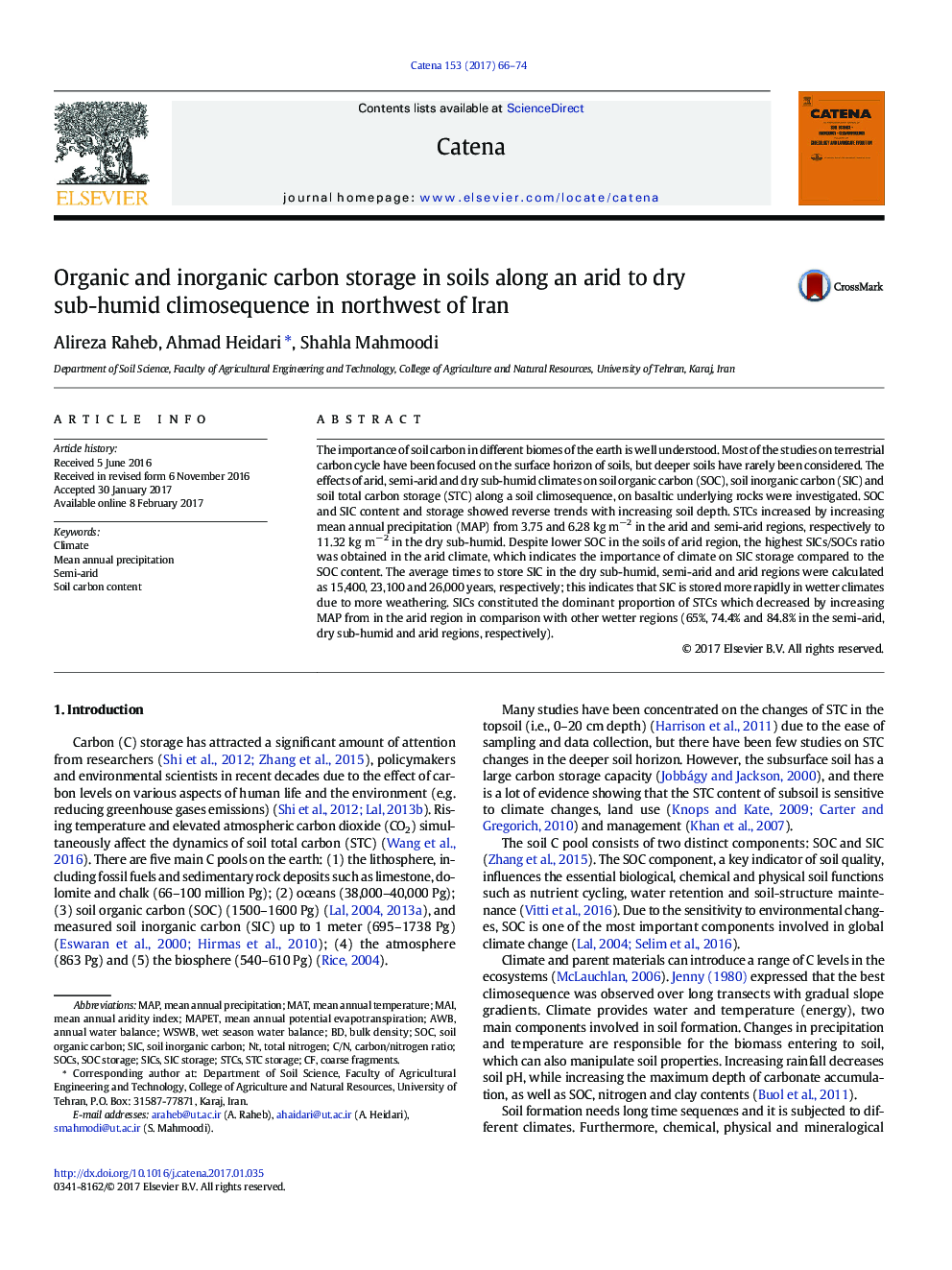| کد مقاله | کد نشریه | سال انتشار | مقاله انگلیسی | نسخه تمام متن |
|---|---|---|---|---|
| 5770150 | 1629201 | 2017 | 9 صفحه PDF | دانلود رایگان |
- SOC and SIC distribution were examined in three different climate.
- We analysed soils were formed on basalts without initial SOC and SIC.
- SIC comprised the dominant proportion of STC in the studied regions.
- Deep soil (>Â 60Â cm) comprises ~Â 50% of soil carbon storage.
- The arid climate showed the highest SICs/SOCs ratio, despite the lowest SOC.
The importance of soil carbon in different biomes of the earth is well understood. Most of the studies on terrestrial carbon cycle have been focused on the surface horizon of soils, but deeper soils have rarely been considered. The effects of arid, semi-arid and dry sub-humid climates on soil organic carbon (SOC), soil inorganic carbon (SIC) and soil total carbon storage (STC) along a soil climosequence, on basaltic underlying rocks were investigated. SOC and SIC content and storage showed reverse trends with increasing soil depth. STCs increased by increasing mean annual precipitation (MAP) from 3.75 and 6.28 kg mâ2 in the arid and semi-arid regions, respectively to 11.32 kg mâ 2 in the dry sub-humid. Despite lower SOC in the soils of arid region, the highest SICs/SOCs ratio was obtained in the arid climate, which indicates the importance of climate on SIC storage compared to the SOC content. The average times to store SIC in the dry sub-humid, semi-arid and arid regions were calculated as 15,400, 23,100 and 26,000 years, respectively; this indicates that SIC is stored more rapidly in wetter climates due to more weathering. SICs constituted the dominant proportion of STCs which decreased by increasing MAP from in the arid region in comparison with other wetter regions (65%, 74.4% and 84.8% in the semi-arid, dry sub-humid and arid regions, respectively).
Journal: CATENA - Volume 153, June 2017, Pages 66-74
